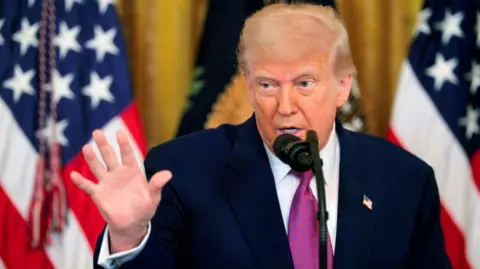The recent US strike on Iran carries significant risks for President Donald Trump, particularly in light of his political aspirations and public image. On a day that began with expectations of an extended negotiation period with Iranian leaders, the timeline abruptly shifted. Trump set an ultimatum, granting Iran two weeks to reconsider its position on its nuclear developments. However, just a mere two days later, a decision was made to launch strikes against Iranian nuclear facilities.
This quick escalation led to the bombing of three nuclear sites, including Fordo, which is often regarded as a critical asset of Iran’s nuclear program. Trump’s assertion that the assault was a “very successful” operation raises questions about the strategy and foresight behind such a swift military action. Was the two-week deadline simply a tactic meant to lull Iran into a false sense of security or did negotiations, spearheaded by Trump’s appointed mediator, Steve Witkoff, fall through unexpectedly? The ambiguity surrounding these decisions adds another layer of complexity to diplomatic relations in the Middle East.
In his communications following the strikes, Trump suggested that this military action might pave the way for peace. However, statements from Iran indicated otherwise. Iranian officials had signaled that any attack would prompt a firm retaliation against American interests. Despite Israel’s ongoing efforts to undermine Iran’s military capabilities, Tehran still possesses various means to respond assertively. The geopolitical situation is fraught with potential for escalation, and any underestimation of Iran’s reaction could lead to significant ramifications.
As the situation unfolds, the international community is left to ponder the consequences of this military engagement. Trump may believe the US strikes will compel Iran to yield concessions at the negotiation table. Yet, if Iran resisted dialogue amid perceived assaults from another sovereign nation, it stands to reason that they would be even less inclined to engage with the US under current conditions.
Another critical aspect is whether the strikes achieved their intended operational objectives. The heavily fortified nature of the Iranian nuclear sites raises doubts about the total effectiveness of the airstrikes, and if those objectives were not fully met, then pressure could mount for further strikes. On the other hand, if the military gains are minimal, Trump may face significant political backlash for undertaking such a risky operation.
Domestically, Trump’s maneuver faces criticism not just from the opposition Democrats, but also from factions within his own party. The “America First” movement that Trump often champions may view this aggression as contrary to its foundational principles of avoiding foreign entanglements. Should the strikes escalate into a broader conflict, the fallout could alienate those supporters who were drawn to his initial platform of non-interventionism.
Trump’s decision on Saturday to attack Iran starkly contrasts with his previous narrative of maintaining a peaceful foreign policy. He had campaigned on the backdrop of avoiding new military engagements, criticizing earlier administrations for entangling the United States in prolonged conflicts. His latest actions now stand at odds with this message, and directed scrutiny towards the internal fractures within his advisory circle about the trajectory of U.S.-Iran relations.
In summary, this decisive military action against Iran presents multiple risks for the Trump administration, intertwining international security and domestic political stability. The unfolding developments may ultimately determine whether this was a singular event or the beginning of a larger military engagement. How these actions play out will significantly impact not just Trump’s presidency but the stability of U.S. foreign policy in the region. The consequences of this strike not only shape relations with Iran but may also alter the dynamics within Trump’s support base, potentially leading to fractures that could impact future electoral outcomes.



